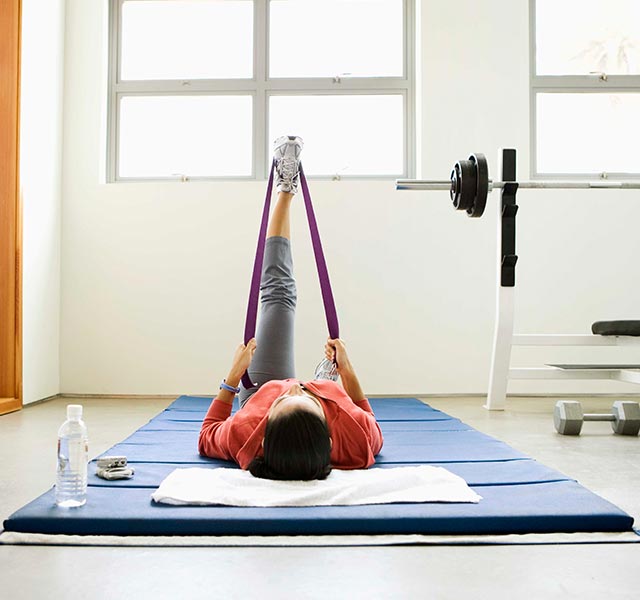Resistance bands currently seem to be the it equipment for busy fitness enthusiasts. They’re portable, affordable, easily stored and the added resistance they offer can help strengthen nearly every muscle group.
People often think of resistance bands as a rehabilitation tool. While that’s true, resistance bands can also help anyone — injured or not — get a solid workout.
Breaking Down Resistance Bands
Resistance bands are a dime a dozen. You can find them at the gym, in your local sporting goods store and through online retailers. But effective use of resistance bands isn’t foolproof. If you don’t use appropriate bands and perform exercises correctly you could injure yourself.
So what qualities should you look for in a resistance band?
Strength
Resistance bands come in a variety of weights and strengths. Which you select depends on your goals. The good news: Most resistance bands are color-coded to help consumers easily identify different levels of tension. The lighter colors (yellow and red) usually offer less resistance while darker colors such as green, blue and black have more.
If I’m working with a football player, I might start with a higher resistance band, like blue or black. But if I’m training someone who is new to exercise, or who is rehabbing an injury, I’ll select a lighter weight band like yellow or red, and then work up to a tighter band.
Type
In addition to different weights and tension, bands come in different styles — figure 8s, double bands and tubes. Some bands even have handles so you can easily exercise your triceps and biceps with extensions and curls. Bands with handles are also great for squats and rows. If you hook them over the ball of your foot, you’ll get a good stretch. Or put a band around your ankles to do side lunges or use a handle band to do curls and extensions.
Durability
All resistance bands are not created equal. Some bands are more durable. Others break down quickly. They can even crack or snap back, which can lead to injury. You can learn a lot about the quality and durability of a band from reading reviews online.
Cautionary Notes
Be mindful of what you’re doing with the band and how you’re doing it. Resistance bands aren’t designed to support all of your body weight in a pull up, for example. If you try to use them the wrong way, you can get injured quickly.
The goal: Stay in control. Use a controlled release when exiting an exercise instead of just letting go of the resistance. Also, make sure the band is secured correctly, so it doesn’t snap off at an inopportune moment.
Getting into a Routine
Resistance bands are a great alternative to traditional dumbbells. They’re versatile and they work your body differently than weights and machines. Unlike traditional weights, which work with gravity, bands deliver constant tension — and they’re a great option for on-the-go workouts. If you’re on vacation or traveling for work, and you don’t have access to weights, you can add bands to a basic body weight routine and take your workout to an entirely different level. And if you have a doorknob, wall or doorway at your disposal, the list of potential exercises blossoms.
Not sure how to use them? Start by doing the same exercises you might do with free weights. You just need to position the band different than a weight. Stand on the band and grasp the handles for bicep curls, wrap the band around your ankles for side steps. Grip the band in both hands, stretch wide and pull down. The options are endless.
Consider meeting with a personal trainer for a few sessions. Not only can they help you devise a program that works for you, they can also ensure that you’re using correct form.
To find an athletic trainer at Henry Ford, visit henryford.com or call 1-800-HENRYFORD (436-7936).



